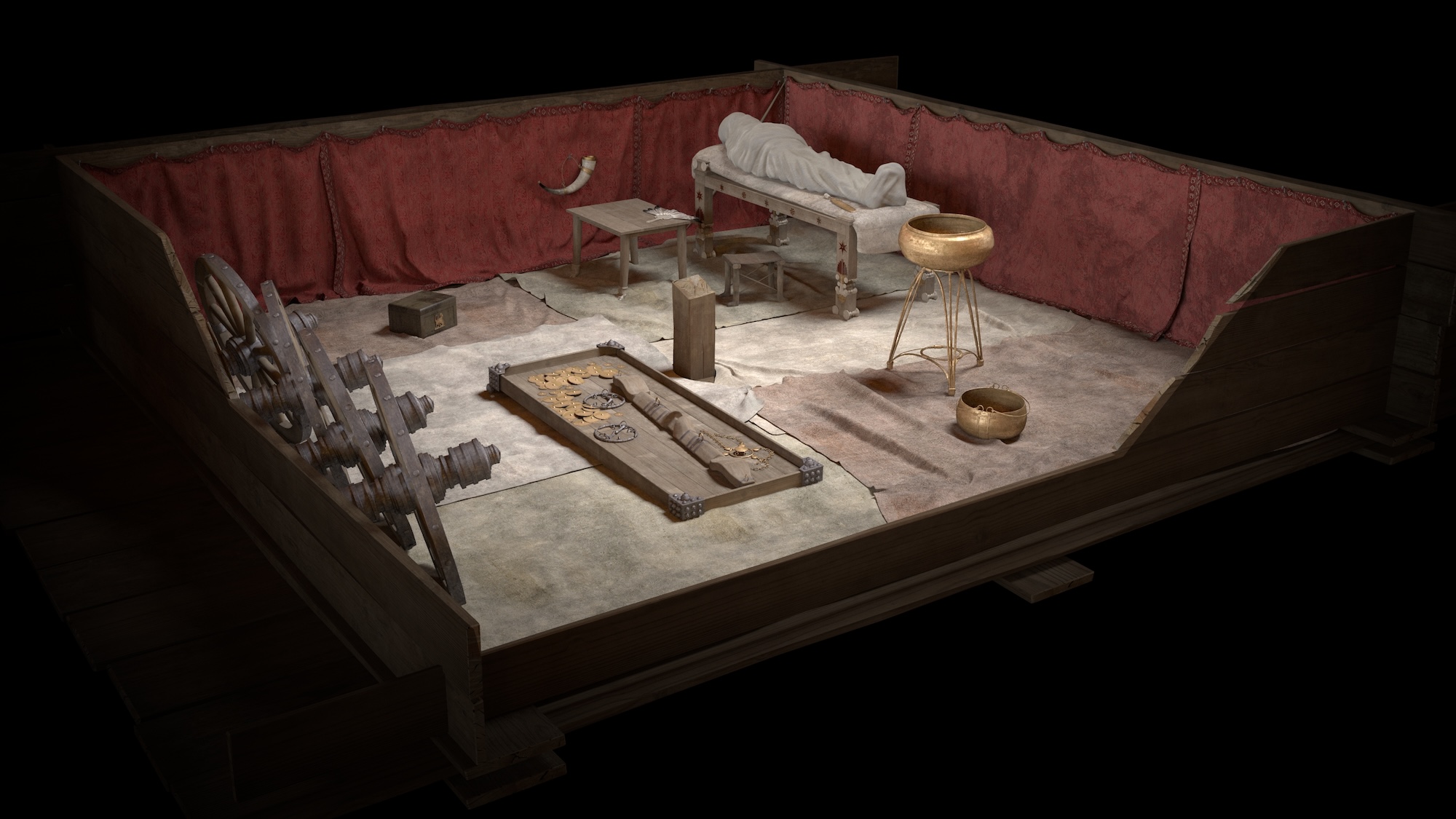Two of Germany’s most famous Iron Age burial mounds suggest nobility was passed down by mothers.

Posted on Jun 3, 2024 11:00 AM EDT

Visualisation of the central grave/main burial of the Grafenbühl mound. Landesmuseum Württemberg, FaberCourtial / Thomas Hoppe
New genetic analysis of two princes’ within a pair of Germany’s most well-preserved Celtic burial mounds confirms a long-suspected familial relationship—one that may shake up our understanding of gender relationships within Iron Age societies. Based on DNA reconstruction efforts, it appears at least some Celtic clans revolved around matrilineal instead of patrilineal dynasties.
Unlike the Roman and Early Medieval eras, written sources from ancient German societies are extremely rare. Because of this, very little can be confirmed about certain cultural details like gender dynamics. That said, early texts from Roman historians like Tacitus and Ammianus Marcellinus depict women leading and participating in military battles. Another historian at the time, Cassius Dio, also related greater sexual freedoms among Celtic women. Beyond this, however, there is a wide gap in what is known about the Iron Age Celts apart from inferences from physical artifacts. And when it comes to physical artifacts, few places are richer than the Eberdingen-Hochdorf and Asperg-Grafenbühl burial mounds.
First discovered in the late-1960’s roughly 6.2 miles apart, they are some of German prehistory’s best-preserved princely burial mounds, also known as Fürstengräber. Believed to have been constructed around 530 BCE, the tombs contained a trove of relics such as gold-emblazoned tools, bronze furniture, iron jewelry, daggers, and birch bark hats. But while they were clearly intended for royalty, for decades researchers could only surmise about their origins and potential relationships. Recent advancements in genome analysis, however, allowed analysts to better give the bodies a closer look.
As detailed in a new study published Monday in the journal Nature Human Behaviour, archeologists used teeth and inner ear bone samples from 31 individuals across the mounds to sequence the remaining DNA and reconstruct their genomes. Of the many remains, two in particular caught the team’s attention.
“Based on the fairly precise death dates, estimates of age at death and the genetic similarity of the two princes, only one scenario comes into question as uncle and nephew,” Stephan Schiffels, study co-author and archaeogenetics researcher at Leipzig’s Max Planck Institute for Evolutionary Anthropology (MPI-EPI) said in an accompany announcement. More specifically, Shchiffels and his colleagues determined the uncle and nephew were related on the mother’s side of the family.
“This result shows that political power in this society was most likely inherited through biological succession, comparable to a dynasty,” added Joscha Gretzinger, another researcher at the MPI-EVA.
The newly discovered relationship is further supported through genomic sequencing of the two mounds’ other bodies, as well as a third mound constructed around a century earlier.
Peering even further into archeological DNA data, the team believes the Celts at Eberdingen-Hochdorf and Asperg-Grafenbühl most likely were descended from ancestors in present-day France and Italy. The French genetics support previously established migration paths, while the Italian origins can also be seen in many of the grave relics’ Mediterranean designs. And while it’s yet to be known if those regions also included matrilineal dynasties, there’s certainly more evidence to support such theories going forward.
>>> Read full article>>>
Copyright for syndicated content belongs to the linked Source : Popular Science – https://www.popsci.com/science/celtic-burial-gender/